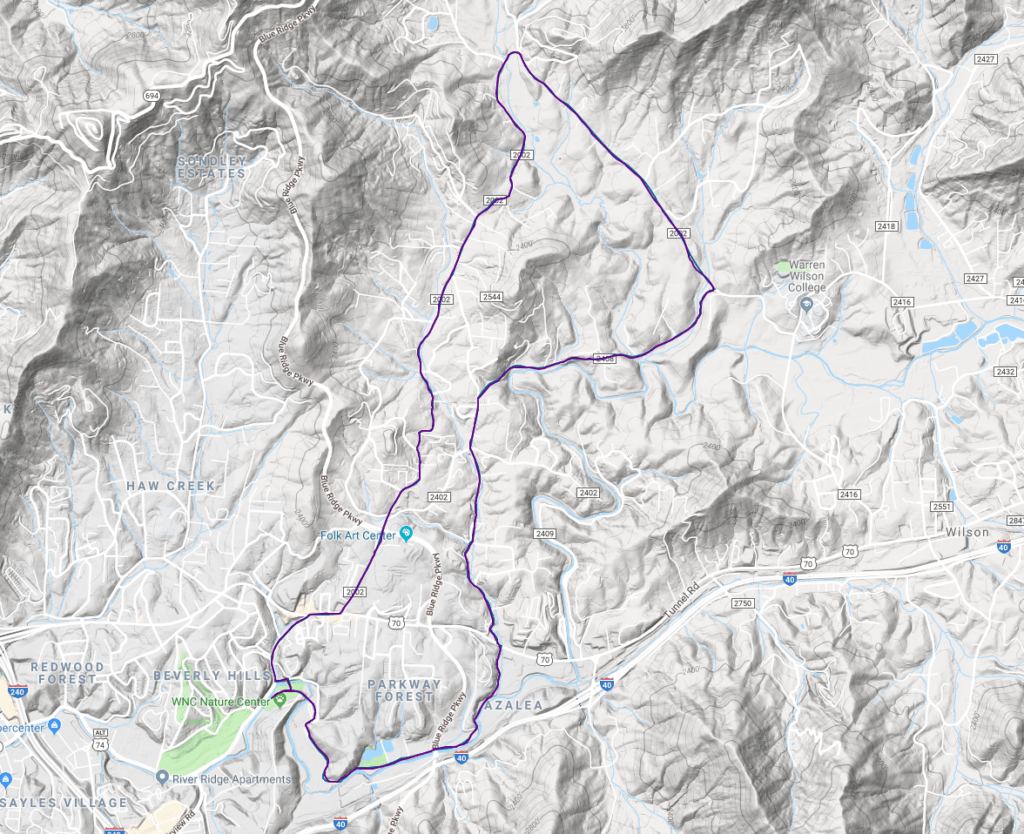I’ve been using Rouvy for my Lake Superior Virtual Bicycle Tour and have been very impressed with the realism of the route simulation. Obviously I haven’t actually ridden any of the 400+ miles I’ve completed in Rouvy, but based on the average speeds and perceived effort, it feels about right. So I decided to see how it might stack up to a ride which I actually had done in real life. Living in the flatland of coastal Virginia, I decided to compare it to a ride with a bit more elevation change–the bike leg of a sprint triathlon I did in Asheville, NC last July. As I do for the Lake Superior tour, I created the route in Google Maps and then used GPSVisualizer to add accurate elevation data.

The image above shows both the GPS track from the Garmin fenix 5 used during the race along with the track following the Rouvy ride. With the exception of a couple hundred yards around the transition area, the two routes match up almost perfectly.

Probably the most impressive correlation between the real and simulated ride are the speeds along the route. As you can see, there’s a slight offset (which I can’t quite explain) but the two activities match up nicely.

Heart rate follows along pretty well although it’s pretty obvious that the purple plot (from race day) starts off higher due to just completing the swim while the Rouvy ride takes about 20 minutes to start closing the gap. Even with the difference in the actual heart rates, the reaction to the various changes in elevation correlates well.

Power is the hardest metric to compare. The plot above uses a smoothing average of 30 seconds in order to make the graph even remotely useful. The race day ride (in purple) had a significant amount of coasting on the descents while the Rouvy ride (in blue) held a more steady effort as expected on a trainer.

However, the Mean Max Power graph is still relatively comparable for both rides.
Although it’s obviously an N=1 test, I think it’s pretty interesting how well today’s simulation software such as Rouvy is able to provide a real-world feel to indoor training. I’ll probably post a few more comparisons from other routes and applications. Thanks for reading and Ride On!
Very impressive comparison! I would be curious to see more of these.
I was training on Rouvy for my 70.3 ironman. I did not do such a profound comparison of the route in the end, but I could feel very similar in the reality on the climbs as I felt at home on my trainer.